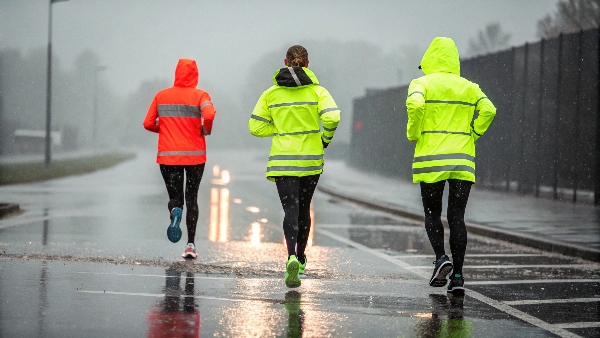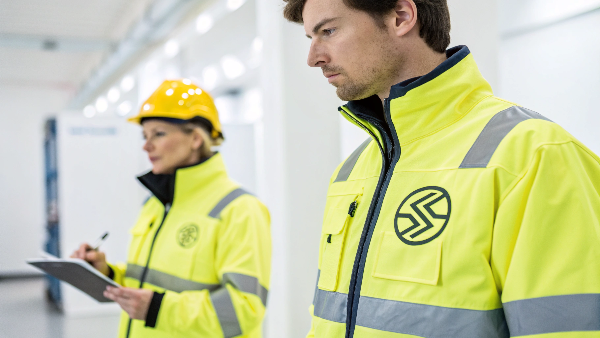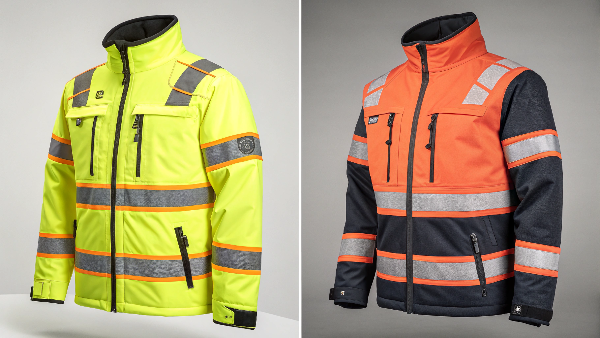Working construction is tough, and sites can be dangerous places. Not being seen or protected properly leads to serious accidents. Safety jackets are a simple solution to keep workers safe.
A construction safety jacket's main uses are to make workers highly visible to prevent accidents with vehicles or equipment, and to provide protection against weather conditions or specific hazards like flames.
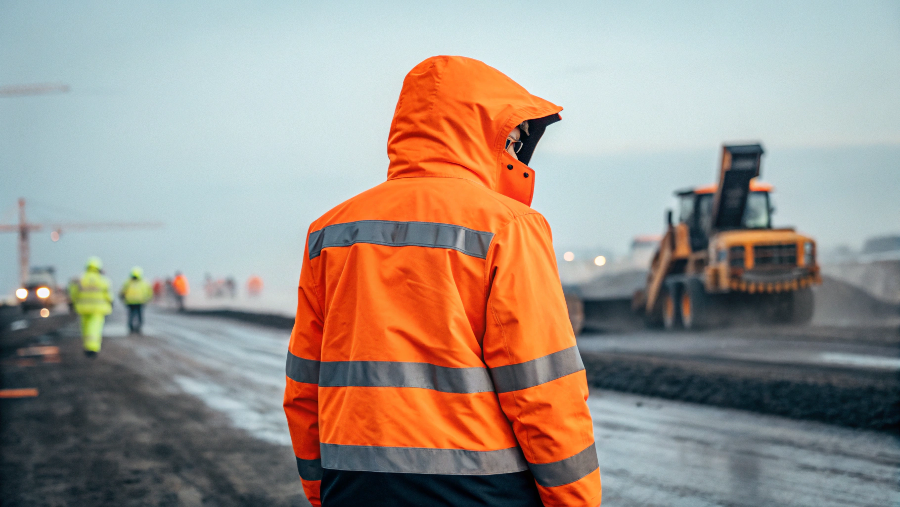
Think about a busy site: trucks moving, cranes lifting, people everywhere. It's easy for someone to blend into the background. A bright safety jacket changes that, making workers stand out. But these jackets do more than just grab attention; they offer real protection when it matters most. Let's look closer at what they do.
What is the function of safety jacket?
Construction sites throw a lot at workers every day. Just being visible isn't always enough protection. Safety jackets step up to offer more comprehensive safety features.
The key functions are high visibility day and night, protection from cold, rain, or wind, and sometimes specialized defense against heat, flames, or electrical arcs, depending on the job.
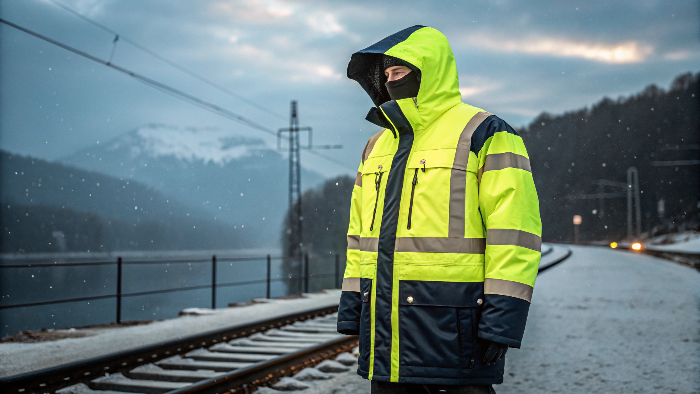
The functions of a safety jacket go beyond just the basics. We design these garments thinking about the real-world conditions workers face. From my experience working with safety apparel for years, I know how crucial these functions are.
Breaking Down the Functions
Let us explore the main jobs a safety jacket performs:
-
Enhanced Visibility1: This is often the primary function.
- Daytime Visibility: Achieved through fluorescent materials (usually yellow, orange, or lime green) that glow brightly in sunlight. These colors contrast sharply with most backgrounds.
- Nighttime Visibility: Provided by retroreflective tape or strips. These reflect light from sources like headlights directly back towards the source, making the wearer appear very bright in the dark. Standards like ANSI/ISEA 107 in the US or EN ISO 20471 in Europe specify the amount and placement of both fluorescent material and reflective tape required for different performance classes (Class 1, 2, or 3), ensuring effectiveness. Class 3 offers the highest level of visibility.
-
Protection from the Elements2:
- Cold Weather: Insulated jackets provide warmth, trapping body heat. This is vital for preventing hypothermia and maintaining worker comfort and focus during cold months. As you mentioned, this is a very common and important use.
- Wet Weather: Waterproof or water-resistant shells keep workers dry during rain or snow. Breathable materials are also important here to prevent sweat buildup inside the jacket.
- Wind Protection: Windproof layers block cold air, significantly improving warmth and comfort, especially when combined with insulation.
-
Specialized Protection:
- Flame Resistance (FR)3: For workers exposed to potential flash fires, sparks, or high heat (like welders), FR jackets are made from materials that won't easily ignite and will self-extinguish.
- Arc Rating (AR): For electricians or utility workers near energized equipment, AR jackets protect against the thermal hazards of an electric arc flash.
Here is a simple comparison:
| Feature | Standard Safety Jacket | Specialized Safety Jacket (Example: FR/AR) |
|---|---|---|
| Primary Goal | Visibility, Weather | Visibility, Weather, Specific Hazard |
| Materials | Polyester, Nylon | FR Fabrics (e.g., Modacrylic blends), AR Materials |
| Key Standard | ANSI 107 / EN 20471 | ANSI 107/EN 20471 + NFPA 70E/2112, ASTM F1506 |
| Typical User | General Construction | Welders, Electricians, Utility Workers |
Understanding these functions helps ensure workers get the right jacket for their specific tasks and environment.
Why do construction workers wear jackets?
Sometimes getting everyone on site to wear their PPE feels like a challenge. But ignoring safety rules leads to accidents and injuries. Understanding why workers wear safety jackets is key.
Construction workers wear safety jackets4 primarily for compliance with safety regulations (like OSHA), for personal protection against being hit by vehicles or equipment, and for comfort against bad weather.
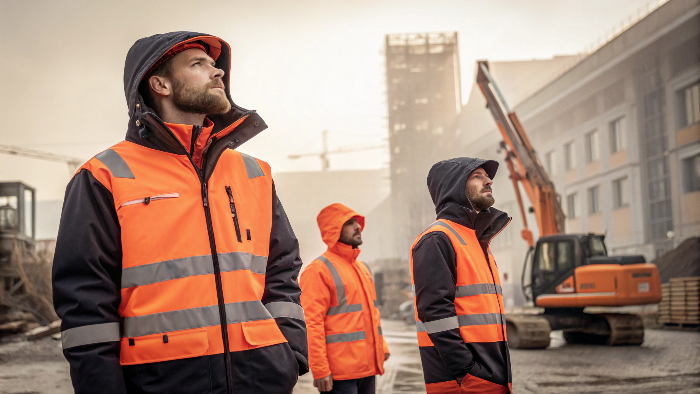
It's not just about following rules, though that's a big part of it. Wearing a safety jacket comes down to several important factors that directly impact a worker's day-to-day safety and well-being on the job site. I've talked with many clients, like Danny Cheng who runs a PPE distribution business in California, and these reasons consistently come up.
Reasons for Wearing Safety Jackets
Let us break down the motivations:
-
Compliance and Regulations:
- Legal Requirements: Occupational safety bodies like OSHA in the US mandate high-visibility apparel5 in many situations, especially when workers are exposed to vehicle traffic or heavy equipment. Failure to comply can result in significant fines for the employer.
- Site Rules: Many construction sites have their own specific safety protocols that require safety jackets or vests as a condition of entry. It becomes part of the job requirement. This is often the most immediate reason – they have to wear it.
-
Personal Safety and Risk Awareness:
- Visibility Saves Lives: Most workers understand the risks. They know that being easily seen by vehicle drivers and equipment operators significantly reduces the chance of being struck. I remember a site manager telling me how PPE compliance6, especially high-vis gear, dramatically improved after a near-miss incident involving a reversing truck. It made the danger very real for everyone.
- Hazard Protection: Beyond visibility, workers rely on jackets for protection against scrapes, cuts, or exposure to harmful substances, depending on the jacket's features.
-
Comfort and Functionality:
- Weather Protection: As we've discussed, staying warm and dry makes a huge difference in a worker's ability to do their job effectively and comfortably. A cold, wet worker is often less focused and productive.
- Practical Features: Modern safety jackets often include features workers appreciate, such as multiple pockets for tools and phones, radio loops, comfortable linings, and designs that allow for easy movement. A jacket that's comfortable and useful is much more likely to be worn correctly.
Comparing a basic safety vest to a well-designed safety jacket highlights the difference:
| Feature | Basic Safety Vest | Feature-Rich Safety Jacket |
|---|---|---|
| Primary Use | Minimum Visibility | Visibility, Weather, Utility |
| Protection | Limited (Visibility only) | Weather, Minor Impacts |
| Comfort | Minimal, can be flimsy | Insulated, Waterproof, Breathable options |
| Utility | Few or no pockets | Multiple pockets, loops |
Ultimately, workers wear safety jackets because it's required, it keeps them safer, and often, it makes their demanding job a bit more comfortable.
What is the use of safety jacket in construction?
Different jobs on a construction site face different dangers. A simple vest might work for some, but others need more. The specific use of a safety jacket varies across the site.
In construction, safety jackets are used to ensure workers near traffic or machinery are seen, protect them from harsh weather, sometimes identify roles by color, and provide specialized FR or AR protection.
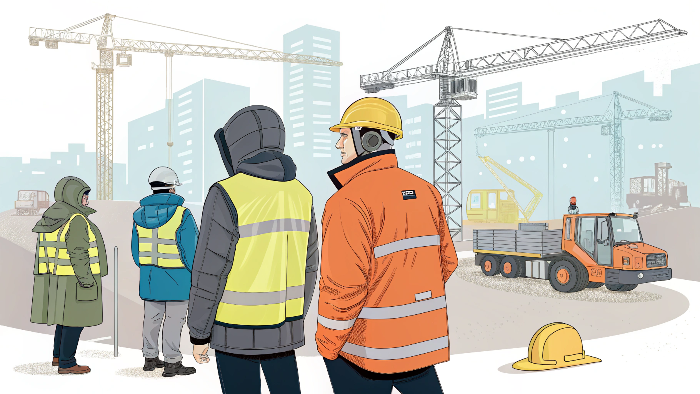
Think about the different areas and tasks within a single construction project. From the crew working right next to a busy highway to the electrician wiring a new building, the specific demands on their safety gear change. The safety jacket needs to match the specific application.
Specific Applications on Construction Sites
Here’s how safety jackets are used in different construction scenarios:
-
Roadwork and Traffic Control:
- High-Risk Environment: Workers here are exposed to public traffic, often moving at high speeds.
- Jacket Use: Maximum visibility is critical. ANSI/ISEA 107 Class 37 or Type R (Roadway) jackets are usually required. These provide extensive fluorescent background material and reflective tape coverage, including on the sleeves and potentially trousers, ensuring visibility from all angles, day and night.
-
General Building Sites:
- Hazards: Movement of heavy equipment (cranes, excavators, loaders), delivery trucks, potential falling debris, and varying weather conditions.
- Jacket Use: High visibility (often Class 2 or 3) is needed to be seen by equipment operators. Weather protection (insulation, waterproofing) is also a major factor for worker comfort and safety throughout the year. Durability is key due to the rough environment.
-
Utility Work (Electrical, Gas):
- Specific Risks: Potential exposure to electrical arc flash or flash fires.
- Jacket Use: In addition to visibility (often Class 2 or 3), workers may require specialized Flame-Resistant (FR) or Arc-Rated (AR) safety jackets8 that meet standards like NFPA 70E or ASTM F1506. These jackets protect against severe burns.
-
Site Management and Visitors:
- Role: Overseeing work, inspections, or brief site visits. Less direct exposure to primary hazards but still require visibility.
- Jacket Use: Often wear Class 2 vests or jackets, sometimes in different colors (e.g., white or blue) to distinguish them from general laborers (often in yellow or orange). Visibility ensures they are seen by operators and workers.
Here’s a quick overview based on roles:
| Role / Area | Common Jacket Type/Class | Key Feature Focus |
|---|---|---|
| Road Crew | Class 3 / Type R | Maximum Visibility (Day & Night) |
| General Site Worker | Class 2 or 3 | Visibility, Weather Protection, Durability |
| Electrician/Welder | Class 2/3 + FR/AR | Visibility, Specific Hazard Protection |
| Supervisor/Visitor | Class 2 (Vest or Jacket) | Visibility, Identification (Color) |
Choosing the right jacket for the specific use case ensures the wearer has the appropriate level of protection for the tasks they perform.
What PPE is mandated on a construction site?
Knowing exactly what Personal Protective Equipment (PPE) is required can feel overwhelming. Missing even one required item can lead to trouble. Understanding the typical mandatory gear is essential.
Mandatory PPE on most construction sites includes hard hats, safety glasses, high-visibility clothing (like jackets or vests), safety boots, and often hearing protection, though specifics depend on the job.
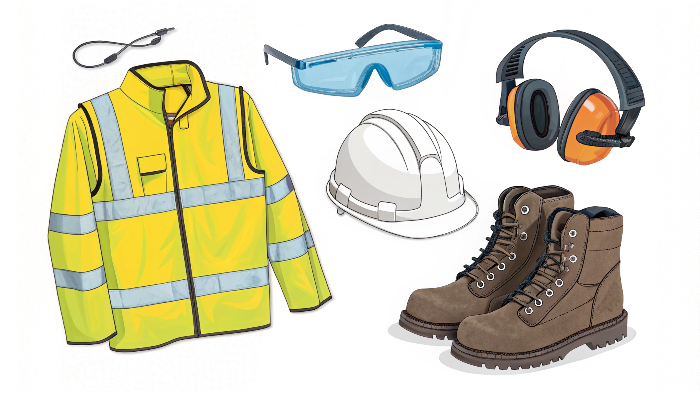
PPE is the worker's last line of defense against hazards. While site managers work to eliminate or reduce risks through engineering and administrative controls, PPE is crucial for protecting individuals from remaining dangers. As a manufacturer, we see the constant demand for compliant gear because companies know it's non-negotiable.
Common Mandatory PPE Items
While a site-specific hazard assessment determines the exact requirements, here’s a list of commonly mandated PPE on construction sites:
-
Head Protection:
- Item: Hard Hats
- Purpose: Protects against impact from falling or flying objects, and electrical shock (depending on the class). Required in almost all construction areas. Different types (Type I for top impact, Type II for top/lateral) and classes (Class G General, Class E Electrical, Class C Conductive) exist.
-
Eye and Face Protection:
- Item: Safety Glasses, Goggles, Face Shields
- Purpose: Protects eyes from flying particles, dust, chemical splashes, and harmful light radiation (like from welding). Basic safety glasses are a minimum standard nearly everywhere on site.
-
High-Visibility Apparel:
- Item: Safety Vests, Jackets, Shirts, Pants
- Purpose: Ensures workers are easily seen by vehicle and equipment operators, especially in low light or near traffic. As we've discussed, jackets offer more protection than vests. Required based on visibility needs (ANSI/ISEA 107).
-
Foot Protection:
- Item: Safety Boots
- Purpose: Protects feet from impact, compression (e.g., falling objects), and punctures from sharp objects like nails. Must typically meet ASTM standards. Often require steel or composite toes and puncture-resistant soles.
-
Hand Protection:
- Item: Gloves
- Purpose: Protects hands from cuts, abrasions, chemicals, heat, or electrical hazards. The type of glove depends entirely on the task (e.g., leather for general work, cut-resistant for handling sharp materials, rubber for electrical).
-
Hearing Protection:
- Item: Earplugs, Earmuffs
- Purpose: Protects hearing from damage caused by loud noises from machinery, power tools, or impact processes. Required when noise levels exceed OSHA limits (typically an 8-hour average of 85 dBA).
-
Respiratory Protection:
- Item: Dust Masks, Respirators
- Purpose: Protects lungs from breathing in dust, fumes, vapors, or gases. Required when hazardous airborne contaminants are present above permissible exposure limits. Needs proper fit testing and selection.
It's vital for employers to perform a thorough hazard assessment for each task and area on the site to determine the specific PPE needed. I always advise my clients, like Danny Cheng who supplies PPE, to stay updated on standards and ensure their customers understand the importance of selecting the right gear for each hazard.
What are OSHA requirements for construction?
Navigating OSHA regulations can seem complicated. But failure to comply can lead to big fines and unsafe conditions. Knowing the key OSHA rules, especially for high-visibility, is crucial.
OSHA requires workers in construction exposed to vehicle traffic or operating equipment to wear high-visibility garments meeting specific performance standards, typically referencing ANSI/ISEA 107.
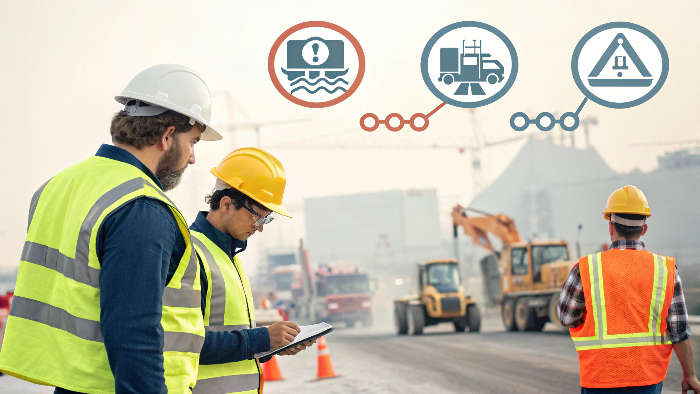
OSHA (Occupational Safety and Health Administration) sets and enforces standards to ensure safe working conditions in the United States. For construction, their rules cover a wide range of hazards. High-visibility apparel is a key area, particularly because "struck-by" incidents involving vehicles and equipment are a leading cause of fatalities.
OSHA and High-Visibility Clothing
Here's a breakdown of OSHA's stance:
-
Specific Regulations: While there isn't one single rule covering all high-visibility use cases, several OSHA standards point to the need for it. For example:
- 29 CFR 1926.651(d): Explicitly requires workers exposed to vehicular traffic near excavations to wear high-visibility vests or other suitable garments.
- General Duty Clause (Section 5(a)(1)): Requires employers to provide a workplace free from recognized hazards likely to cause death or serious physical harm. OSHA often uses this clause to cite employers for not providing high-visibility apparel when workers are clearly exposed to struck-by hazards from vehicles or equipment, even if not explicitly covered by another rule.
-
Reference to Consensus Standards: OSHA frequently references the ANSI/ISEA 107 standard ("American National Standard for High-Visibility Safety Apparel and Accessories") as the recognized industry guideline for performance requirements. Compliance with ANSI/ISEA 107 is generally considered by OSHA as meeting the high-visibility requirements.
-
When is High-Visibility Required by OSHA?
- Workers exposed to public vehicular traffic (e.g., road construction, utility work).
- Workers exposed to construction vehicle traffic (dump trucks, cement trucks, etc.) on site.
- Workers operating or working near construction equipment (excavators, cranes, pavers).
- During nighttime operations or in low-light conditions (dawn, dusk, fog, rain).
- Flagging operations (specifically addressed in the MUTCD - Manual on Uniform Traffic Control Devices, which OSHA references).
-
Employer Responsibility: OSHA places the responsibility on the employer to conduct a hazard assessment, identify situations requiring high-visibility apparel, select the appropriate garments (based on ANSI/ISEA 107 Types and Classes), provide them to workers, and ensure they are used correctly.
Meeting OSHA requirements isn't just about avoiding fines; it's about actively preventing accidents and protecting workers' lives. As manufacturers, ensuring our Vissafety products meet or exceed ANSI/ISEA 107 standards is fundamental to helping our clients comply with OSHA.
Why do we need a jacket?
Sometimes putting on a jacket feels like an extra step, maybe even a burden. But skipping it can lead to discomfort or danger. Understanding the basic need for a jacket is important.
We need jackets primarily for protection: against cold, rain, and wind; for enhanced visibility in hazardous situations; or to meet specific requirements like work uniforms or specialized safety standards.
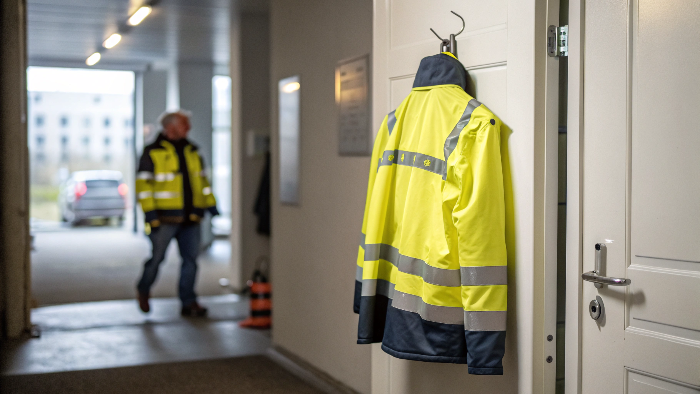
Beyond the specific rules of a construction site, the need for a jacket comes down to fundamental human needs and safety principles. Whether it's for work, commuting, or recreation, jackets serve several essential purposes that contribute to our well-being.
Fundamental Reasons for Wearing a Jacket
Let us look at the core reasons:
-
Maintaining Body Temperature (Thermal Regulation):
- Cold Protection: Our bodies need to stay within a narrow temperature range. In cold environments, a jacket provides insulation, trapping body heat and preventing it from escaping. This helps prevent discomfort, loss of dexterity, and serious conditions like hypothermia. Think about those freezing winter mornings on a construction site – I know from talking to workers that a good, warm jacket isn't just nice to have, it's absolutely essential for getting through the day safely and effectively. This directly relates to your insight about cold weather protection.
-
Creating a Barrier Against Weather:
- Rain and Snow: Waterproof or water-resistant jackets keep us dry. Being wet not only feels miserable but can also lead to rapid body heat loss, increasing the risk of hypothermia even in cool (not freezing) temperatures.
- Wind: Wind dramatically increases heat loss (wind chill). A windproof jacket blocks this effect, making a huge difference in how warm you feel.
-
Enhancing Safety through Visibility:
- Being Seen: As we've focused on for construction, bright colors and reflective materials make people visible in situations where they might otherwise blend in – near traffic, during dusk or dawn, in bad weather. This applies to cyclists, pedestrians, road crews, and emergency responders too.
-
Providing Specialized Protection:
- Workplace Hazards: Some jackets offer protection beyond weather, like the FR/AR jackets discussed earlier, or jackets with built-in padding for specific tasks.
-
Meeting Uniform or Professional Standards:
- Identification/Professionalism: In many jobs, a jacket is part of the uniform, helping to identify employees or project a professional image.
-
Utility and Convenience:
- Carrying Essentials: Pockets are incredibly useful for carrying keys, phones, tools, or other small items securely.
Essentially, we need jackets to stay comfortable, safe, and functional when conditions demand extra protection or visibility.
When should you wear a jacket?
Deciding whether or not to grab a jacket isn't always obvious. Making the wrong call can leave you shivering, soaked, or even unsafe. Knowing the key times to wear one helps.
You should wear a jacket when weather dictates (cold, rain, wind), when visibility is poor or required for safety (low light, near traffic/machinery), or when site rules or regulations mandate it.
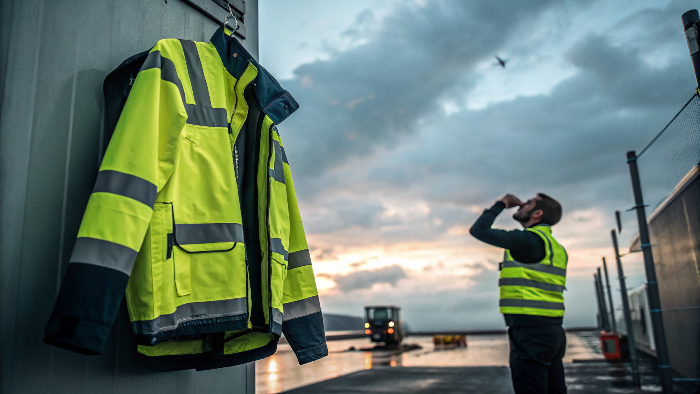
The decision to wear a jacket often depends on evaluating several factors simultaneously. It's about balancing comfort, safety, and sometimes, rules. From my years in the safety apparel business, I've seen that having clear guidelines helps people make the right choice consistently.
Key Triggers for Wearing a Jacket
Consider these factors when deciding:
-
Weather Conditions: This is usually the most obvious trigger.
- Temperature: Pay attention not just to the number, but also the "feels like" temperature, which includes wind chill. A cool day can feel much colder with wind.
- Precipitation: If rain or snow is falling or forecast, a waterproof or water-resistant jacket is essential to stay dry.
- Wind: Even on a moderately cool day, strong winds can make a jacket necessary to block airflow and prevent heat loss. I always check the forecast before heading to a site visit, focusing on temperature, precipitation, and wind speed.
-
Work Environment and Visibility Needs:
- Low Light: Dawn, dusk, nighttime, heavy overcast, fog – any condition that reduces natural light often requires a high-visibility jacket for safety, especially around moving vehicles or equipment.
- Proximity to Hazards: Working near roadways, active construction equipment, or in complex industrial environments usually mandates high-visibility apparel, often including a jacket.
-
Activity Level:
- High Exertion: If you're doing strenuous work, you might generate a lot of body heat. In cool (not cold) conditions, you might opt for layers you can remove, or a highly breathable jacket to prevent overheating. However, in very cold or wet conditions, a jacket is still necessary, but breathability becomes even more important.
- Low Activity: If you're standing still or doing light work in cool or cold conditions, you'll need more insulation than someone moving around a lot.
-
Regulations and Site Rules:
- Mandatory Requirements: Regardless of weather or personal preference, if the job site rules or regulations (like OSHA) require a specific type of jacket (e.g., high-visibility Class 2 or 3), you must wear it. This overrides all other factors.
Here’s a simple way to think about it:
| Condition | Trigger to Wear Jacket | Example Scenario |
|---|---|---|
| Cold Temperature | Thermometer reading, wind chill | Working outdoors in winter |
| Rain or Snow | Precipitation falling or imminent | Site work during a rain shower |
| Strong Wind | Noticeable airflow causing cooling | Blustery day, even if temperature isn't freezing |
| Low Light / Night Work | Dawn, dusk, night, fog, inside dim buildings | Road crew working after sunset |
| Near Traffic / Machinery | Working near moving vehicles or heavy equipment | Directing trucks on a construction site |
| Site Rules / Regulations | Posted signs, supervisor instruction, company policy | Entering any area marked "Hi-Vis Required" |
Thinking through these points helps ensure you choose to wear a jacket when it provides necessary comfort or, more importantly, critical safety protection.
Conclusion
Construction safety jackets are vital PPE. They ensure workers are seen, protect them from weather and specific hazards, and help meet crucial safety regulations. Choosing the right jacket matters.
-
Explore how Enhanced Visibility can significantly improve worker safety in various environments, ensuring they are seen at all times. ↩
-
Learn about the various protective features of safety jackets that shield workers from harsh weather conditions, enhancing their comfort and safety. ↩
-
Discover the critical role of Flame Resistance in safety jackets for workers in hazardous environments, ensuring their safety from fire-related risks. ↩
-
Explore the significance of safety jackets in construction for compliance, visibility, and comfort, ensuring worker safety on site. ↩
-
Discover how high-visibility apparel enhances safety by improving worker visibility and reducing accident risks on construction sites. ↩
-
Understanding PPE compliance is crucial for maintaining safety standards and preventing workplace accidents in construction environments. ↩
-
Discover the ANSI/ISEA 107 Class 3 standard to understand the visibility requirements for safety jackets in high-risk environments. ↩
-
Learn about FR and AR jackets to see how they protect workers from electrical hazards and severe burns in construction. ↩

